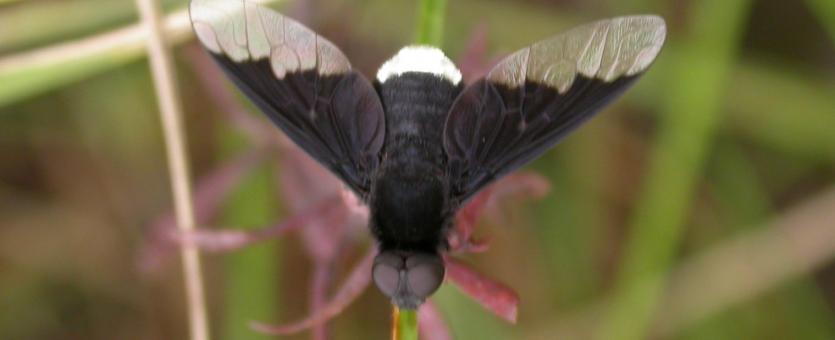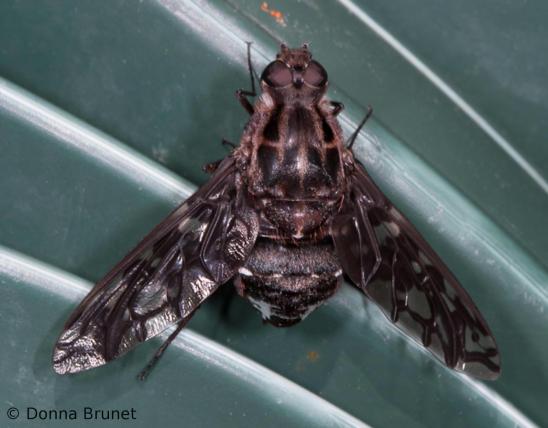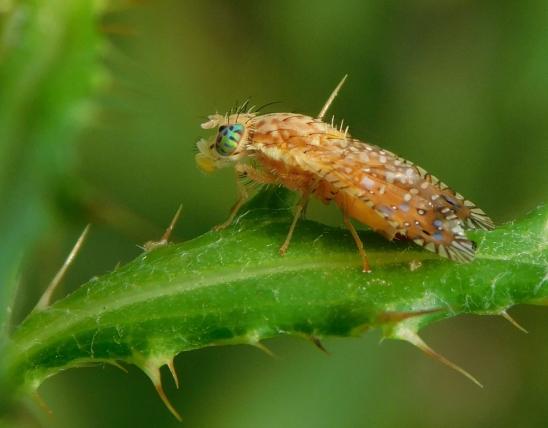
The bee fly Anthrax georgicus has no widely recognized common name, though some have called it the field coal bee fly and the black bee fly. Look for it in grasslands, fields, sandy areas, and other open habitats. People often see it hovering close to the ground, hunting for the burrows of tiger beetles.
Like other bee flies, its young develop as parasitoids that eat other insects. In this case, the females deposit eggs into the nest holes of tiger beetles. At first, the bee fly larva attaches itself externally to the immature tiger beetle and only feeds on its juices, but as the tiger beetle larva nears maturity, the bee fly larva eats it up. The adult bee flies apparently do not eat.
Learn more about bee flies (family Bombyliidae) on their family page.
Ecosystem Connections
This species serves as a check on tiger beetle populations.



























